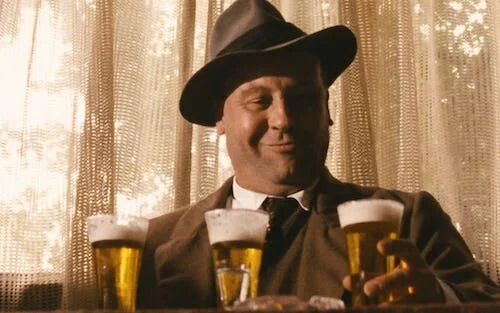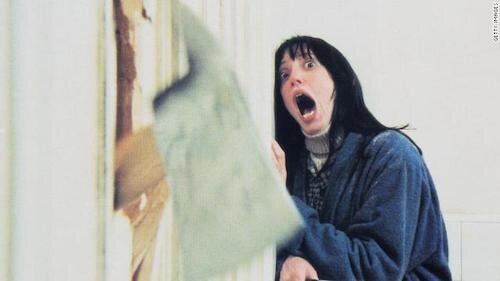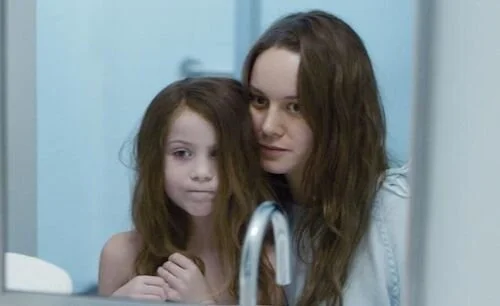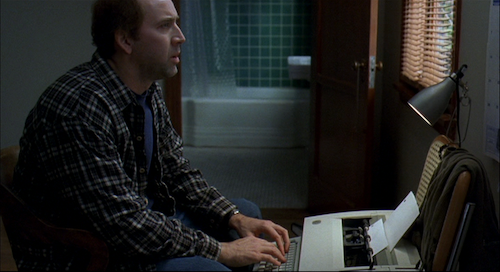The Art of Adapting a Text for Film
Berlin Alexanderplatz
A concern I often hear when people discuss films is how different a film is from a source material. Almost always, this debate rises out of the complaints of readers that dislike how their favourite texts were made into films. That’s an understandable complaint, since you conjure up a motion picture in your own head as you read (in a way), so seeing a part of a story that is now a piece of you being removed hurts. However, today’s article is not meant to say that anyone that feels this way is wrong. It’s to give you examples as to why this may happen.
The key word here is “adaptation”. An adaptation is a modification of something or someone to exist in a new way. This includes species that evolve or change their living habits to survive. In film, this is the formatting of a novel (or any other source material, but we’re focusing on books today) to prepare it to be filmed. A director likely won’t be holding the novel during a shoot and trying to capture every little detail. A screenplay will be written instead. A screenplay is a text specifically for film and television, and the way one reads is incredibly different than how a novel would. You’re looking at a major change in tone and style, even when describing the same things. So — bear with my amateur writing — you’re looking at the difference between this:
Sally was not used to this type of waiting room. It was cluttered with medical posters that fought with one another, as vibrant colours and ghastly smiles demanded the attention of every patient. All Sally could think to herself is “What am I doing here?”, before her self reflection was interrupted by the sound of indifference. “Sally Winger?”, the intimidating, unconcerned receptionist barked. Sally tilted her head and reluctantly replied “That’s me,” with the faintest hint of optimistic melody, as to appear somewhat chipper. “Come with me,” said the receptionist, who clearly didn’t fall for the pseudo-sincerity. Sally followed, hesitantly.
and this:
FADE IN:
INT. WAITING ROOM
The walls are cluttered with medical posters, all that seem bright and cheery despite the dismal people sitting inside. Sally is in the middle of the shot, with her head down.
SALLY (Voice Over)
What am I doing here?
RECEPTIONIST
Sally Winger?
Sally looks up, as if she is startled. CUT to a low angle shot of a receptionist who seems miserable with her job.
PAUSE
CUT to a high angle shot of Sally, facing the receptionist with false glee.
SALLY
That’s me!
RECEPTIONIST
Come with me.
Sally is visibly hurt, even a tiny bit, at the lack of sympathy. She slowly follows the receptionist. PAN to Sally meeting the receptionist and walking off screen.
Take my writing with a grain of salt (I’m not very good at either form of writing), but the foundations of both styles of writing are so incredibly different. You can only imagine what it’s like to translate one text to the other. That’s only one reason as to why so many things change from text to test: it’s a translation, from a description for a reader to a set of guidelines for cast and crew, with enough give (interpretational lines) and take (specific cues to follow).
The Shining
Secondly, books are not film. When you schedule to watch a film in a theatre or at home (or wherever), you have the time length in mind. Do you have enough time to fit in a three hour film today? Film is a constant medium, with information being delivered every frame. Books are much more dependent on the reader; you read at your own pace. You can even reread parts much more comfortably than you can revisit moments in a film; you have the option to rewind or fast forward, but you’re disrupting the flow of the film. Novels usually take much longer to get through (depending on their length and your reading speed), so you can take days or weeks (or months, if you’re me) to get through a novel. Again, films are certain durations at fixed speeds. You enjoy them as they are intended. So, obviously all of the subtleties a book can get into may make a film too long.
So, we have a translation from source to source, and the different natures of these sources. If you weren’t sure why adaptations were so different than their original materials before, the idea may start to become much clearer now. Lastly, there’s just creative decisions that a filmmaker, producer, screenwriter or performer may want to make; they may have come up with a different image in their head the same way you might as you read, despite being fond of a novel overall. With all of this in consideration, let’s start to observe some notable examples that highlight some drastic (or accurate) ways that a novel has been adapted, and why they may have ended up this way.
Room
One of the most noteworthy filmmakers that steered away from source materials was Stanley Kubrick, who often used novels as starting points before turning these works into his own interpretations. While adapting Red Alert, Kubrick noticed that this political thriller could pass off as a goofy satire, and thus Dr. Strangelove was born. Stephen King famously dislikes The Shining (to different degrees, depending when you ask him), since Kubrick focused less on the supernatural aspects of the story, and more about turning its characters into a family driven insane by cabin fever. Kubrick’s films are often an extreme when it comes to how films can differ from their sources, because of his creative output. More minor examples of decisions made to change a novel can be a setting, a character’s nature, or a time period. Such an example would be Atom Egoyan’s The Sweet Hereafter, which changed the setting from New York to British Columbia, since producing the film in Canada proved to be much cheaper and easy to fund.
A more delicate adaptation would be Peter Jackson’s The Lord of the Rings series, which are incredibly faithful in some ways, and different in others. An entire character (Tom Bombadil) was omitted from his versions (and other versions) of the trilogy, as his character was decidedly a distraction and a narrative deterrence (even though he works however well he works in the novels). Having a character like Tom Bombadil in the novel seems fine to me, because he could be used as a bit of a relief (as he is a cheerful character), whereas there was comedic relief devoted to various characters in the film that served that purpose. A good portion of the ending of The Return of the King was taken out of the film as well, as to save time; people already complain about how long the film’s conclusion is, so this was likely a smart move.
If you want to see what a novel being transformed into a film on a more literal level would look like, that would be Rainer Werner Fassbinder’s television epic Berlin Alexanderplatz, which is nearly sixteen hours. Sixteen. Hours. Released in the ‘80s when television miniseries and movies were really starting to take shape, this adaptation feels like you are reading a novel in the way it is presented (with the revisitation of earlier moments through different perspectives, and tons of time spent on establishing moments). Now, with the huge market for such series, adaptations can freely be presented in such a way, sans limitations.
We’re also seeing literary authors step into the screenwriting scene as well. Room’s writer Emma Donoghue created her own screenplay as well, so it was her decision to change the novel’s perspective of a child to a more understandably open approach in the film (since we have to take the narrator’s point-of-view for what it’s worth in the novel, yet we can see everything in the film for ourselves). Similarly, author Gillian Flynn adapted her novel Gone Girl into a screenplay as well; she ended up collaborating with Steve McQueen on the screenplay for Widows (an adaptation of a television series of the same name). To show complete control of one’s own work, we have Stephen Chbosky who wrote The Perks of Being a Wallflower, adapted the screenplay for a film, and directed the film himself. He refused to let anyone else direct, as to disallow any major changes for any reason. Writers being in complete control of their works being adapted is hardly an anomaly anymore.
Adaptation.
Then there’s a completely extreme adaptation of a novel literally titled Adaptation.. Charlie Kaufman was asked to adapt The Orchid Thief by Susan Orlean, but had no idea how to make this best selling novel into a good film on his terms. So, he made the screenplay about him struggling to adapt the novel, created his twin brother (who doesn’t exist in real life) as a metaphor for his conflict of interest in cinema, and stemmed as far away from a conversion of the novel’s story as much as possible. This is not a common example, but it’s one of my favourites, given how much it defines what an adaptation can be. Your favourite character now drinking lemonade instead of iced tea doesn’t seem so drastic now, right?
There are a lot of considerations when a novel is turned into a script. How will this moment in the novel play out on screen? Will it make sense to make these detours? Will we have time for all of this? Can we shoot this film in the intended location? Do we have money for all of this? Do I even want to keep this? Do I even like this novel, and am I adapting this just to make it better in my own way? Do I not want to change a single thing as much as possible? How much are my cast and crew going to put their own signature spins on every little decision here? Do I force them not to? The main thing to remember is that, at the end of the day, these are adaptations: a personal take (or takes) on a source material. Chances are your favourite novel won’t end up exactly as you’d expected on the big screen for many different reasons. Even authors in control of their own film adaptations can’t stop some changes, or encourage these changes themselves. These are two different art forms that exist in very different ways. Remembering that may make future disappointments a bit easier to swallow. A novel can be enjoyed one way, and the film in another (if you enjoy the film, that is). Sometimes, seeing both as separate entities — which they are — helps remind you why a novel and a film under the same title and boasting the same story can be so different.
Andreas Babiolakis has a Masters degree in Film and Photography Preservation and Collections Management from Ryerson University, as well as a Bachelors degree in Cinema Studies from York University. His favourite times of year are the Criterion Collection flash sales and the annual Toronto International Film Festival.





